WG Labs (Wargaming.net’s publisher brand) released NGD Studios reimagining of the all time classic space 4X game Master of Orion on August 25, 2016. The game is a turn-based space 4X strategy game with pausable real-time combat. The game only has the original races of the first Master of Orion but uses many of the mechanics of sequel.
The game has espionage, ship customizer, diplomacy, and a tech tree where the player will have to make choices. Immediately, it should be noted the game uses starlanes as a mean of strategic movement, along with the real-time combat format the game diverges away from two staples of the original two games.
This may be a deal breaker for some players and to them there is very little any reviewer that can say that will change their mind. As such, my review will focus on covering the game for those that don’t mind these features.
However, this doesn’t mean I won’t be critical of them if it’s warranted. The other noteworthy aspect of the new Master of Orion is the high production values. The game is in line with the visuals we see from many AAA titles. However, as it’s well known to veterans of the genre: gameplay is far more important. This is especially true for the title that holds a classic’s namesake.
Overall, Master of Orion does hold its own. It might not be what some would have wanted, as mentioned earlier, but the game is a decently pleasant experience. However, the genre as a whole has evolved so the game being neither a HD remake for the nostalgic fans or an avant-garde for the genre, which has lately become highly competitive, will disappoint some players.
By no means does this make Master of Orion a bad game. It’s actually a good game, and for any player willing to explore a more typical game style that still changes the formula of the classic, the game can offer a worthwhile experience. That said, there are criticisms to be had with some of its core mechanics that would hinder the game even if it wasn’t called Master of Orion.
No Holding Back
As mentioned before, Master of Orion doesn’t spare an inch on production values. The graphics are top notch, full musical score with some melodies being well suited for the genre while others are more on the energetic beat. The graphical icons, some diplomatic lines, and the previously mentioned tunes establish the game as more of light-hearted experience. The game is a little tongue and cheek, and to be fair, so were the originals.
One aspect that shows off this high production value is the voice acting. Overall, I thought they did a good job on all of them; even the ones which I found annoying were well done. However, succeeding at being annoying is not the best thing one can achieve. It was only a few of the science advisors that were unbearable and the game does let the player mute them. I admit I enjoyed most of them.
Overall, the game’s presentation is very solid and the high quality aesthetics (when not grating) does add to the experience. Though a player might skip the more repetitive cut-scenes like when you’re colonising a new world or when you’re playing the same race for the fifth time, but they’re nice to have during a victory as it gives more weight than a score screen pop-up.
In the Beginning
The game only has the original ten races from the first Master of Orion. The player can also customise their own race by taking an existing race as a visual template and assigning points to create the spread they want. Except for the more oblique traits the differences won’t change the way you play the game. This doesn’t mean the traits don’t matter, but overall the same strategies still work.
Purist will note that some of the more unique differences of the originals are not the same or even lacking. Example: lithovores don’t consume minerals and their growth is still influenced by the static food boosts of certain buildings (they can’t farm though), or how Cybernetic races only consume half-food but have no mineral cost. While the hive-mind race still uses colony moral.
Aside from moving away from the originals, it also makes these races less unique as well. The game also has a slew of options to customise your game. This includes six difficulty levels, starting progress, age of galaxy, size, and type.
The galaxy types are just the way the galaxy is divided up between players before they need to research a certain tech before they can explore further. It’s less about interesting topography and more about how soon you can come in conflict with other races.
The game also lets you enable and disable pirates, random events, and the like. You can also disable unwanted victory conditions and you can also set the game’s pace. This last one is actually welcomed and is even more detailed than in other games.
You can set a global pace but you can also fine tune production, population growth, and science rate independently. I’ve always wanted to slow down tech but not necessarily the production speed so this was very welcomed.
To Boldly Explore the Same Old Thing
Exploration is actually rather monotonous, though it can be argued older 4X games were just as dry, the genre has actually come a long way in this field and this was a place a bit more modern thinking could have helped.
The game has random events and monster guarded systems, but I have not seen random monster attacks. I understand these can be annoying but they do help make the galaxy feel more alive. What hurts exploration is the lack of interesting planets or space oddities. The player will find the occasional deep space signal but these tend to be very stale and uninspiring discoveries. One can completely ignore them and not feel hindered at all.
There are wormholes, but that is about it as special features. Aside from the planet’s value (habitable or inhospitable, and its mineral richness), there is nothing extraordinary to find on these worlds. Some have minor specials but these again seem underwhelming as bonuses. It may be hard to balance these but a modern 4X game needs to do more in this regard, especially if the game wants to stand on par with more modern titles.
As it stands, the player can build a few scouts, set them to auto-explore, and then forget about them. Then occasionally trade for star charts with other races and the exploration phase is done. Even if a player is not too keen on exploration and rather bypass this phase of the game, you’ll still need to explore. However, as I said, the main issue is that there are very few extraordinary things to find.
The Issue with Starlanes
A huge disclaimer, I have nothing against starlanes. You can ask Adam and he can tell you the long email chains where I defended the starlane mechanics. Now this said, I have to criticize how starlanes have been implemented in Master of Orion.
The issue is that the game requires one turn to go from point to point in a star system and no matter how fast an FTL drive is it will always end the turn at a point inside a star system. The end result is that each star system acts like a speed bump that many times will also require a turn to pass through before your ships continue zipping past along the lanes.
This makes travel along the network even more laborious than I’ve seen in other games that have used starlanes. Anything but the smallest maps will take a considerable amount of turns to get from any given point to another even with the fastest drives.
Even the jump gate tech doesn’t alleviate this completely as this only boosts travel between your systems and allied systems with a built gate. This does give a defender’s advantage, but it seems that it gives too much of one and at times it can also act against the defender as it may take too long to rally and send a fleet to defend the front.
It can also be argued this is to offset the lack of having maximum ranges, however it doesn’t justify the excessive transit times it causes. It also devalues the worth of end game FTL drives as they have long past the point they can make a star to star jump in one turn.
Also, the fact jump gates are built at nodes and not planets means that even with the fastest drive it will always take at least three turns to get to any other planet in your empire if not more based on the distances between the gates. The only thing you can ever reach within a turn is a point within the same system or transiting one interstellar lane if your drive is fast enough.
Furthermore, if you traveling outside of a network you will have to endure two additional turns for each additional system you have to cross over, no matter the drive tech you have. This makes the starlanes not just a way to shape borders and the direction you can expand, but also as a mountain sized speed bump which affects late game strategic mobility.
Building an Empire
Planet management is pretty standard and as mentioned earlier there is hardly anything special to find except for the planet’s overall quality. It’s akin to finding a good spot on a map but with no unique resources or bonuses that would make you go after less optimal tracts of lands.
This significantly limits that “must have” feeling we get when we find a new system. However, due to starlanes some systems may have a lot of worth as strategic bottlenecks. There is very little cost to expanding as well, an extra world is always better.
There is no stress on your empire for expanding. You may still need a healthy economy to quickly build high maintenance colonies, but if you avoid building those structures quickly nothing stops you from just claiming another world and even a sparsely built-up colony is more valuable than no colony at all.
The side effect is that there is no cost to expansion, and though some players do find such limiters frustrating, the complete lack of them means a fast expansion strategy is always better. The only limiter is the use of a population unit from a productive world and the time to build the colony ship.
There is a diplomatic penalty if you expand too much, but this is easy to keep in check and once you are more powerful than your rivals, it’s easily ignored.
Planet management is similar to Master of Orion II except this time food is local. There is a tech that will let you support planets in the same system, this tech also allows you to export production to a central planet for the system. However, the basics are the same and as such so are all the flaws present as well.
I am referring to the fact that as long as your economy can handle it, there is no need to specialise worlds, there is an advantage to build everything on a planet if you can handle the cost. Also, terraforming is always beneficial. This leads to all your planets becoming Gaian core worlds.
The second is the economy can be shifted on a dime. Need more ships then slap as many population as you can in production, need to power through techs then transfer everyone to science. I have always been critical of the “change on the dime” economy model, some adaptive flexibility is needed but when a world can flip-flop back and forth at a whim it takes away from the long term strategic choices and makes your empire less interdependent.
Some players however do like this economic model so they might be pleased but purist might miss the empire wide food exports.
Working Together or Not
Diplomacy, like the tech tree, is one of the elements that follows the tried and true method, Even the interface seems lifted straight from the Civilization series. Now there is an old saying, don’t fix what isn’t broken.
However, as of late, many games have tried to mix the formula up a bit here and for good reason. The system is becoming stale. The system begs for something different, something unique, but alas the game doesn’t stray far from the tree.
This is thankfully offset by the fact what we do have is robust as most of the options are there, including enticing other empires to go to war with each other. The AI seems to be proactive and respond logically to what is happening. Allies will try to get you into their wars, and even not so allies might come for help. The AI will even offer tribute at times, or demand it as well.
What I do think is lacking is that you can’t offer counter proposals when the AI is the initiator. When you initiate you can ask: “what will make this work?” and you can then change the offer even more and re-select that option. However, if the AI initiates you can only accept or refuse what they are offering. The problem is that refusing tends to give a diplomatic penalty. On the other hand, it does offer an interesting choice one must consider when dealing with other races.
Obviously, you don’t have to be nice and one way to do this is via the espionage system. At its core the system seems fine. You automatically train spies which then you can send on missions of various types or send them to a world to help with counter-espionage. Losing a spy means you have to wait till the replacement is trained.
There are a few criticisms. Firstly, you can only have 10 spies; this is regardless of map size and how many opponents you have. So on a large map you will never have enough spies to play a strong defensive game and on a small map you will have way too many for offensive use.
The second issue is the long time it takes to complete the top tiered missions which will limit the choices you are willing to invest the time into. Also considering how an economy can be turned on a dime (the AI may not be this responsive to an attack however) certain attacks can have their damage mitigated. Production is crippled by sabotage, make it a science world for those 10 turns. It does impede the immediate strategy, but it’s not like the world is now useless either.
Thirdly, the spies need to managed as units. They require to be sent to their target and then assigned a mission. When you decide to use all your spies offensively, this can become a little micro-heavy despite only having 10 spies max.
Lastly, unless you specialise in espionage your spies will usually fail as it is not hard to set up passive spy defenses. So most of the time you’ll probably use them defensively if you’re not specialised for it.
Choices
There isn’t much to say about the basics of the tech tree, it follows the standard interlocked tree model that is common to many 4X games that have tried to emulate the Civilization series. Even the tree’s layout is the same. The two main differences are the bottom branches never intermingles with the top branches so you can avoid sections of the tree for a time, and that many techs require you to pick only one application from within it.
This last mechanic is similar to what we’ve seen in Master of Orion II, the main difference is that not every tech has such a choice. It’s also rare to see a choice that the player feels they need to get all the options. This is good as the “must have” techs are usually given without choice, but it also means there is not as many difficult trade-off choices in the tech tree.
Though the tech tree does offer a wide variety of weapon systems with different strengths or weaknesses, it feels more could have been done on this front. However, as I will say when discussing the ship designer, this flaw is more to do with the tactical combat system than with the tech tree itself.
What I do wish they did is find ways to have more planet based improvement choices. There are a few, but most tend to be warship techs. Also, there seems to be places they could have added more choices without compromising that all the “must have” techs will be accessible.
The ship designer on the other hand is elegant, straight-forward to use, and has a robust auto-updater. As for the player that wants to design their own ship it has all the features they could want. You can assign core systems, special systems (both passives and activation based), and weapons which you can select the firing arc and modifications that change their properties.
Visually each race has their own ship models, and you get to pick from two visual variants per ship size. Overall, I think this is one of the better implemented mechanics and any flaws it may have can be traced down to other aspects of the game. There is a lack of more distinct weapon types but the way tactical combat works would have made such choices redundant anyways.
War Actually Changes
Combat is in real time. However, you can pause combat, issue commands whole paused, set if the camera resets itself when you pause, the camera’s starting position when you initially start, if combat starts paused, speed up or slow down combat, and if you have an AI assist or not helping you.
In short, you can tailor the combat experience to your liking. Unless it’s multiplayer, then you have to auto-resolve all your fights. Speaking of the auto-resolver, it seems to do a decent job at simulating the results, which would be roughly the same as if you had AI assist enabled and let the entire fight go on by itself.
This doesn’t mean there are no discrepancies but they are well within reason of what you’d expect. It’s rare to find auto-resolves that are reliable, so this was a plus. Now for the actual combat mechanics, the player can set their ship’s speed and minimum and maximum engagement range. They can even set the formation of ships within the same class which gives different bonuses.
The player can also choose to activate any click-based special systems they have installed. Disabling the Assist-AI allows the player to have complete control of the battle.
Visually, the fights are gorgeous and can sometimes result in spectacular space battles that other games had trouble achieving. The game even has a cinematic viewer mode but it is as spastic as one would imagine it to be. For those that just want to watch fights, you are better off being your own camera director. The fact you can still have active control is a bonus.
Now for the players that want complete tactical control, does it hold up. The answer depends on what you expect. Real-time combat will always have trouble to be as “deep and thoughtful” as turn-based combat since one is like chess and the other a game of football, different skill sets. However, this doesn’t mean tactical combat can’t be deep. This sadly is not the case.
This is because facing only effects weapon angles like avoiding forward arc weapons. You have no shield facing (honestly I don’t mind this since I always seen shields as bubbles and not separate arcing fields), but you also have no positional damage. Actually, you don’t have any critical sub-system damage either which is a staple of making space combat interesting.
Also, space terrain is randomly generated, placing asteroids and gas clouds in the battlefield. I would have preferred if these were linked to strategic map topography instead of random additions to the battle map. You can’t depend on them and are easily ignored as well.
Unless you have a lot of special activation-based modules on your ship, the only real tactical options you have is to have your faster ships outmaneuver the AI while picking the best targets for your ships while using the odd terrain to your advantage if available.
The system seems to be more for show and flair than to make the player take the role of a Fleet Admiral.
The game also has ground invasions, but like other games of this scope the mechanics are simplified. You can soften up planets with bombs (which you need to install on your ships thus taking up space) before landing your troops (which you build on your planets). You always have the option to bombard a world to lifelessness, which only seems to upset the race you did it too. Naturally, if you use a Stellar Converter, you can always fulfill your Darth Vader fantasies.
Victory at All Cost
Like any 4X game, having set goals for the player to achieve that aren’t too far beyond the point where end game becomes too much of a chore to play. Master of Orion manages to achieve this but it doesn’t fully overcome the issues some may experience with the late game.
You have your standard conquer everyone along with a score victory. You can also achieve technological mastery, economic supremacy, or aim for a diplomatic victory.
Score is what it is, a set timer which ends the game and you win if you have the highest score. Pretty much the victory to make sure the game ends before it drags out. What I did like it seems military power is added to your score. Thus having a large military is rewarded like any other aspect of the game.
Science is the typical race to the finish line. Get all the needed tech which are all at the end of the tree and build the 3 wonders. These race to the finish line conditions have always been boring and this one is no different, at least it’s the only one. Fortunately, if you don’t like any of the victory conditions, you can disable them at the start of the game.
Diplomacy and Economic are the two more interesting victory conditions.
Diplomatic is similar to the second title, population equals votes, the two highest are contenders, and you can get allies or diplomatically request other races to vote for you. Control a super majority of the votes and you win. Simple, elegant, more than one way to achieve this, and can end the game before it gets too drawn out.
Economic victory is the other tug-of-war style victory. The general idea is to use your credits to purchase shares while also maintaining the most productive and built-up empire in the game. If you hold a certain threshold in both for a given set of turns, you win. I actually like it, since it gives another route to victory and is not exclusive with the diplomatic route. This gives the opportunity to hit victory when there seems to be a stalemate in the diplomatic approach.
Basically, the economic victory represents the fact that you were about to snowball and win the game anyways. This also gives another way to win the game peacefully when the votes are deadlocked or you only have two empires left (diplomatic victory disables at that point).
The classical issue of the late game dragging on still lingers despite these victory conditions. This is either due to micromanagement of your colonies, economic and diplomatic victories are deadlocked and you have to pace away till a science or score victory, or that late game wars drag on due to how starlane travel works. At least the new MOO does fair a bit better here than other recent 4X games have.
MP and the Technical Stuff
Firstly, as mentioned earlier, tactical combat is not available in multiplayer. There has been no word from the developers about tactical combat in multiplayer. I don’t play 4X games in MP but I imagine those that do will want the full experience, and though it’s not uncommon for certain features to be different, core features a game is known for missing is another matter.
There are places where the English localisation seems a little off, nothing major and honestly I barely noticed it. What is more noticeable is that some tech descriptions have an awkward way to scroll for more information, this is found on techs that have a long “restricted to” planets list. At first glance the list is incomplete which can mislead the player, and trying to scroll it is awkward and I’m still not sure how it works.
AI does get the job done and the higher difficulties are a challenge, and even the lower difficulties still seem to be able to play the game properly. The higher difficulty levels seem to make the enemy more economically competitive (I imagine the typical AI bonuses, though I can’t confirm), more persnickety in diplomacy, and more aggressive against the player. This said I never seen the AI do something clever.
The game is stable and seemed bug free for the most part while I played. I had one crash with the current build and nothing really hung outside of that. However, it does seem if you play for a long time on a big map, manual saving starts to become slow and reloading the game might cause odd issues. Usually exiting to desktop and relaunching the game clears this up.
There was no mod support with the build I played but the developers have mentioned this coming after release and plan to support the modding community. Overall, the game seems polished except for the memory leak, which is not as bad as I’ve seen in other games, and runs pretty smoothly on my PC. Large battles can cause a bit of stutter and lag if you are not on a high-end PC.
Final Verdict
Master of Orion is an interesting game to study. It perhaps shows us something many have known but few are willing to fully articulate openly. The game falls into an odd uncanny valley, on one side it’s not a HD remake of the classic, while others would prefer a new trend setter which by default would have to be different. Master of Orion ends taking the middle path.
Though there are many that would love if the game was nothing but a HD remake, it’s not that simple as recreating the experience is an abstract concept that is different for each person. What I loved about Master of Orion the original is not what you loved about it. There are overlaps for sure, but there are probably more differences than most of us are willing to admit.
So it’s hard to know what change will be taboo and who would get mad at the changes brought in. A perfect HD Remake is not really a new game, even if that is something some would like, then you will have to deal with the flaws that were present in the originals. Minus any legal issues since owning a brand, or a copyright, or an IP are not all the same and it doesn’t mean you can just do a HD Remastered. Never mind all the other business and marketing challenges as well.
The other side of this valley are those that want a modern 4X to take the genre to the next level to become this generation’s classic, but also one that the previous generation can still admire. This is obviously no easy feat as you must please two distinct groups which sometimes are at odds with each other.
How this pertains to the current Master of Orion is that it chose to stick to the classics yet still change aspects of the classic without really innovating either. The safe path of keeping the game similar, but not risking what a completely new creation or a simple HD remake with minimal changes would incur. However, by taking this approach the game ends up being in an uncanny valley of its own choosing.
I could be completely wrong about this uncanny valley, in which case the mechanics I’ve criticised in this review have hurt the game’s overall enjoyment. The dull exploration, the uninspired planets, and the way starlanes were implemented (which interferes with the pacing of the late game) had a far more significant impact on the overall quality of the game.
I would recommend Master of Orion to newer players of the genre that want to get into 4X gaming more easily, to fans of the classics that don’t mind seeing some key things done differently, and to fans of the genre that are interested in having a game that offers a lighter and more streamlined experience.
However, I can imagine die-hard fans that wanted a more classical recreation, players that wanted something new or fresh in design, and people that just dislike RT combat or starlanes will not be sold on this game.
This doesn’t mean the game was poor, it was still fun at times. What the game does do well is offer a decent experience that looks good with some interesting victory conditions, along with an overall polished feel. However, I find myself longing for something different, something more after playing a few sessions.
|
Space Sector score:
7.3/10
good
|
|---|
| The Good: – Impressive production values in graphics and sound. – Easy to learn and pick-up, but still full of details. – Visually stunning and cinematic space battles. – A step in the right direction for victory conditions. – Fairly polished and stable game with a decent AI. |
| The Bad: – Some vocals can be annoying to some people. – Exploration is rather dull and late game can still bog down. – Tactical combat is not as deep as many would like. – Poor implementation of starlane mechanics. |
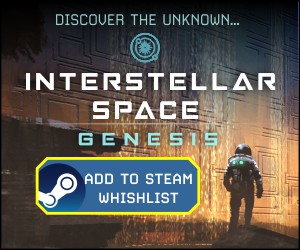
9 Comments
Related Articles:
- Master of Orion: Conquer the Stars – First Look Video
- Master of Orion: Conquer the Stars Announced
- Master of Orion – Early Access First Impressions
- Master of Orion – Early Access Date and Information
- Stellar Indie Venture: Lord of Rigel

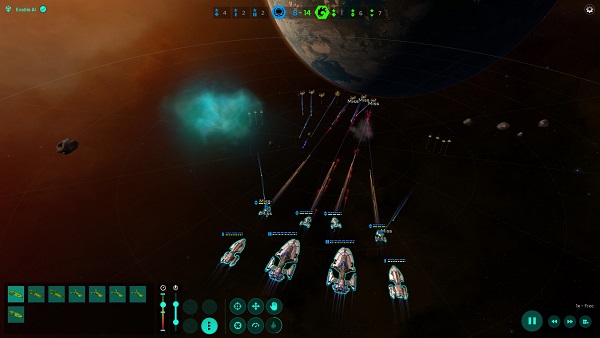
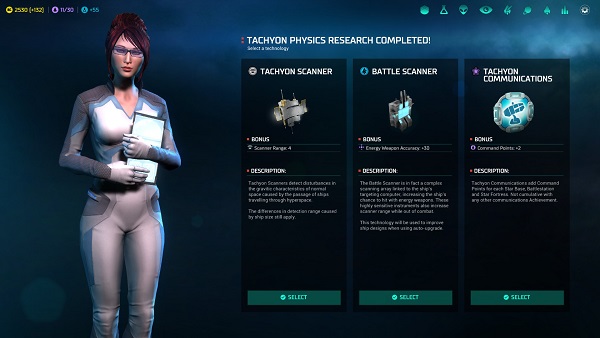
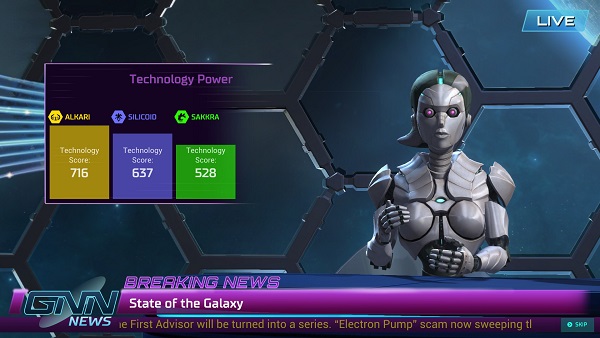
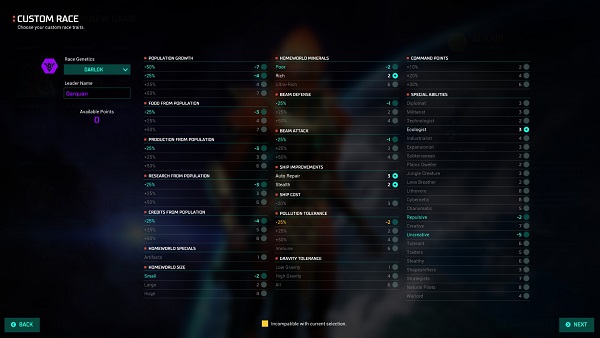
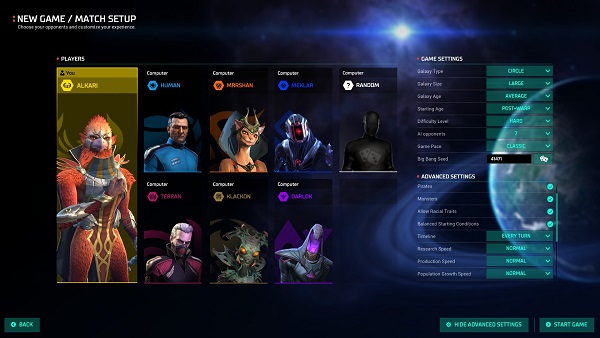
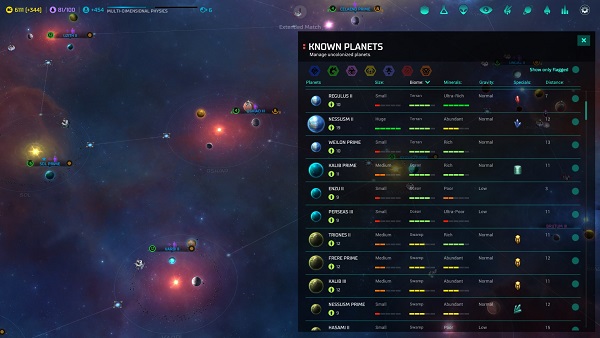
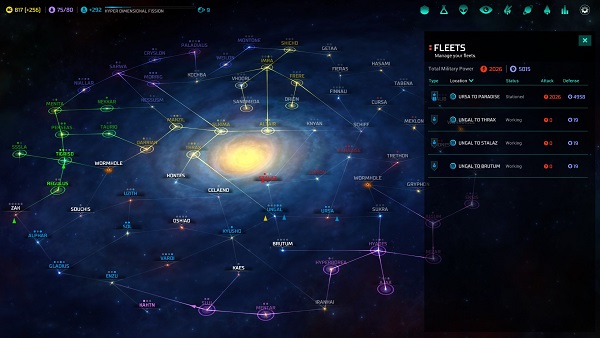
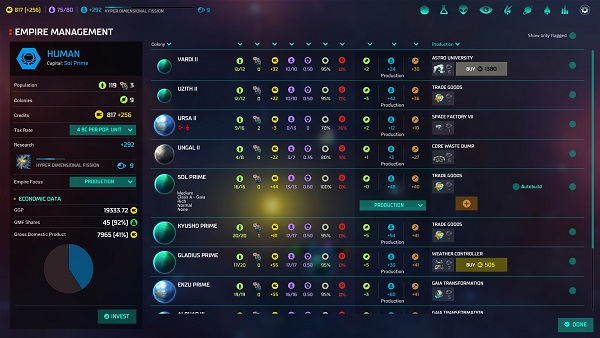
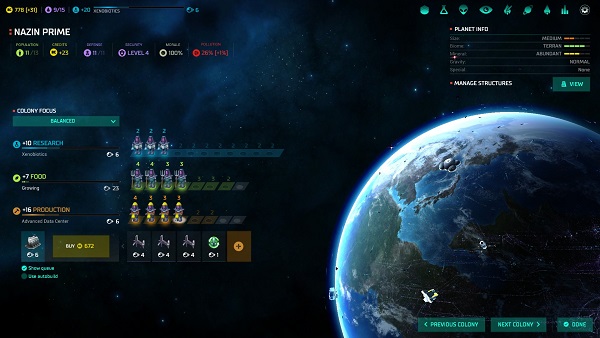
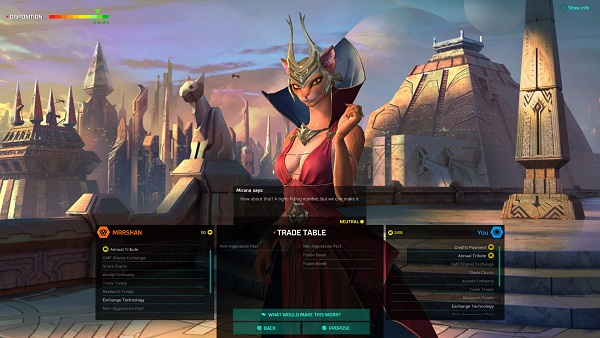
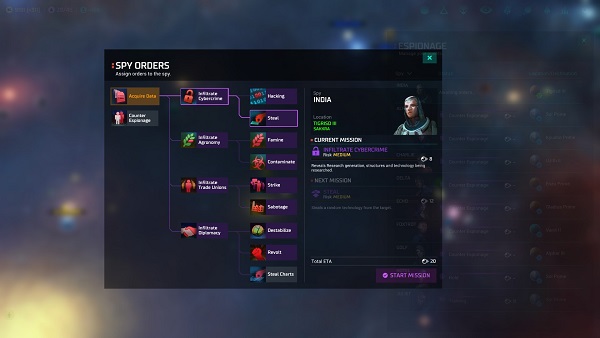
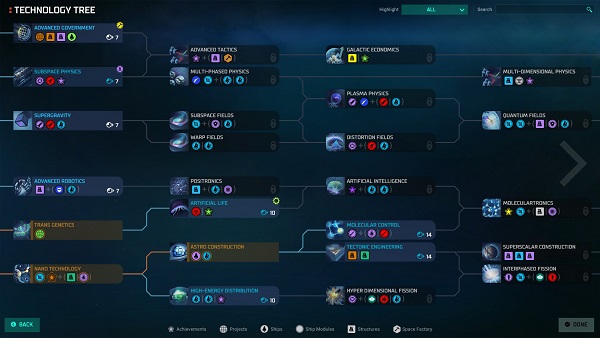
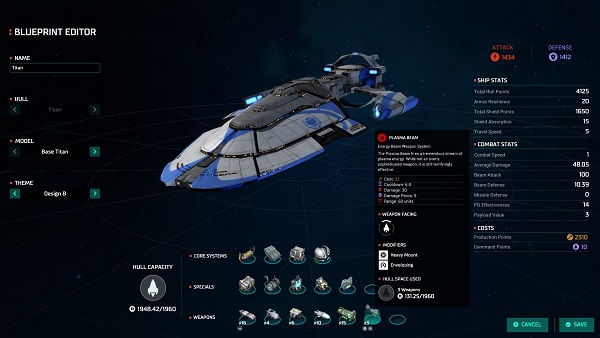
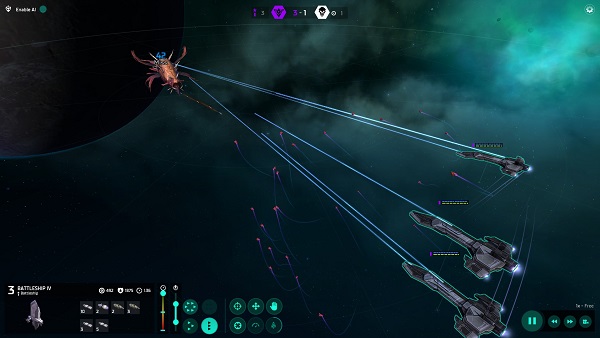
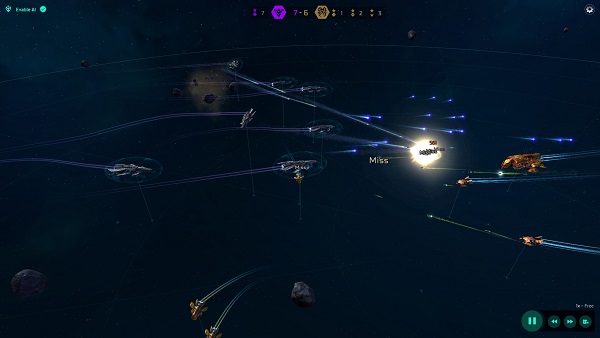
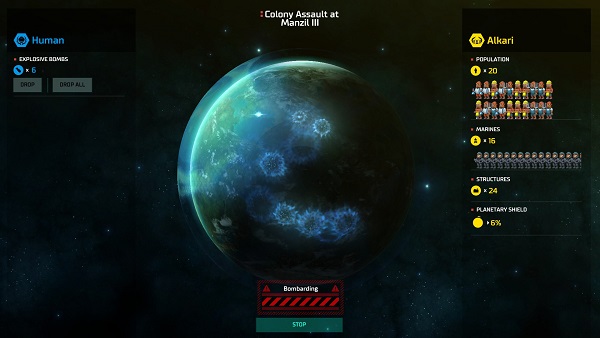
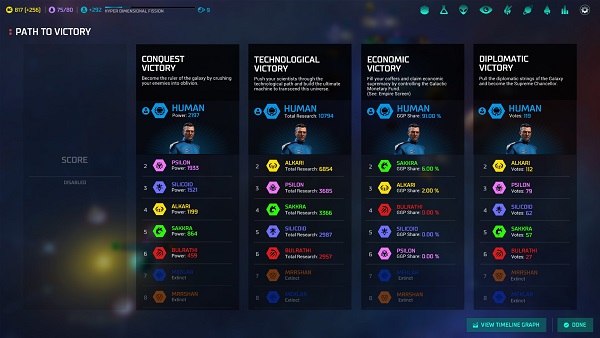
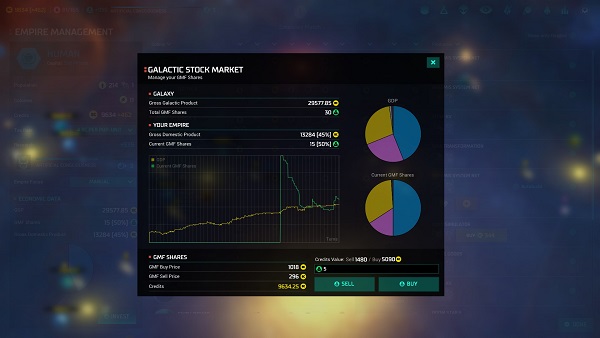
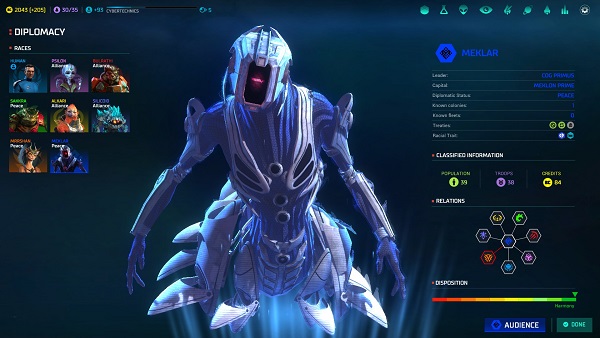
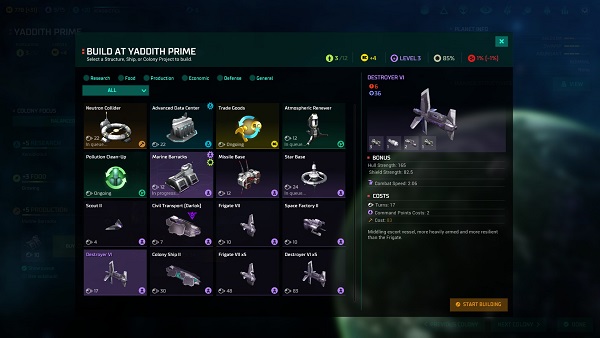
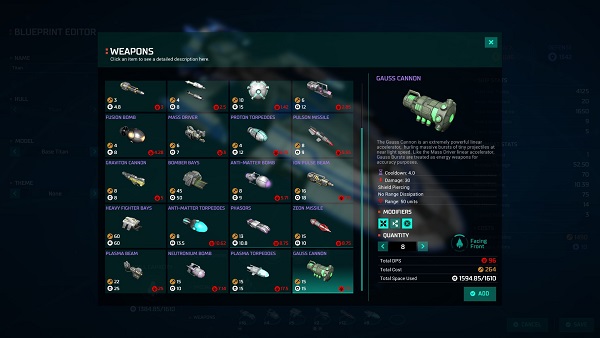
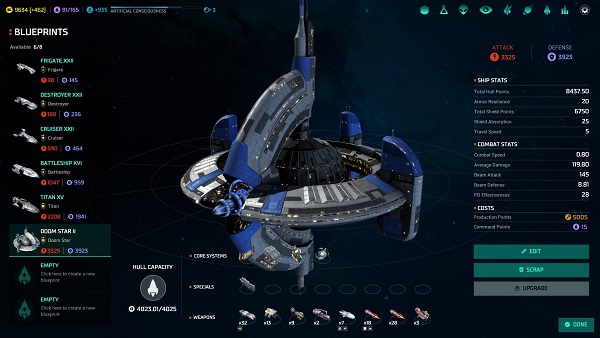

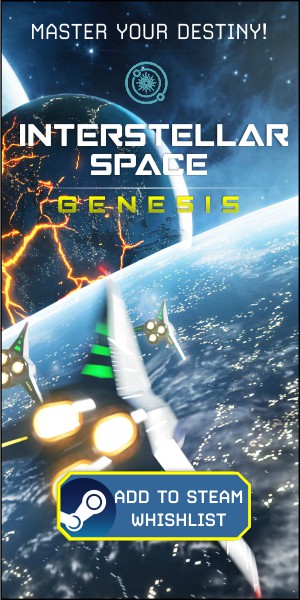


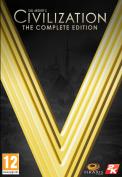


Thanks for the review. I figure I might pick up the GotY edition sometime in the future.
Unless I missed it, I didn’t see any reference to the UI. Is the UI intuitive or obscure? Is sufficient information presented to the player or did you find it lacking? That (IMO) was a big strength of MoO2: game controls were easy to decipher and information concerning your empire was complete and easily accessible. That was also a problem (again, IMO) with Stellaris: controls took some getting used to and way too much info was either not present (i.e., no “ship” table revealing the location and identity of your vessels) or clumsily implemented (the Outliner).
From your review, it appears that the latest iteration of MoO is a capably-constructed but uninspired 4X which avoids both big missteps and clever innovation.
I tend to collect 4X games, but I think I will wait to pick it up until the price drops sufficiently. Who knows? Maybe by then some of your mentioned issues with the game will be resolved as well.
You’re right, I didn’t really mention it. I usually only mention the UI if it stands out because of a distinctive visual style or because it has issues.
So from there you can tell it was neither something special, or it was broken or bad. I also mention this in the review’s end segment:
“Easy to learn and pick-up, but still full of details.”
This applies to the UI as well. It works and easy to learn. You are able to get a lot of information quickly (there is the odd screen that doesn’t but it’s easy to get to one that does give it to you) and is clean except for that one part I mentioned in my review (seeing the “restricted to” planets list of some techs on some screens). As such, there are a few spots I think the UI could have been improved.
Forced Starlanes: Check!
Hard to control movie-like RT combat: Check!
Flash and glitter over substance: Check and Check mate!
Well there goes most of the things that actually made MOO2 worth playing. I’ll definitely be passing on this lazy, simplistic, casual-friendly sequel. Very disappointed, we wait 20 long years for a decent MOO game and they end up delivering us this….. glorified tablet game.
Hopefully MOO 5 – if it is ever made – will have some degree of respect for the intelligence of more serious strategy gamers rather than being aimed at the lowest common denominator in order to milk the most cash.
I wouldn’t say hard to control RT combat because that implies there is something worth to control but it isn’t manageable. I’m not sure if I just defended the game or back-handed it.
Anyways, it’s more of an issue that there is no real reason to control your ships individually except for the standard commands. This is because most of the options seems to be more like guidelines for the AI to follow.
The funny thing, RT doesn’t mean it can’t be detailed or have a lot of depth. SotS had positional damage and though that might be a little too much for some, things like sub-system critical damage is not present. Also, facing could have been given a more important role.
The scary thing, as I mentioned in my review, is that I don’t mind starlanes so when even I have an entire section dedicated to criticising them, it means it wasn’t well implemented.
Oh I agree with you, I dont think there’s any reason in principle why RT tactical combat cant be deep, detailed and controllable. Its just that MOO 4’s particular implementation fails dismally on all three points, possibly due to inept design, but more likely because they wanted to be as casual-friendly as possible. SOTS (especially the sequel) does a terrific job of RT tactical combat but one thing you definitely cant accuse it of is being casual-friendly.
As for starlanes I dislike them intensely, especially MOO 4’s quite bizarre implementation which – as you correctly pointed out – is even more restrictive, unimmersive and disruptive than normal starlanes. But honestly if I were scoring the game I would only rate it about one point less than you did and starlanes by themselves would not prevent me from buying.
I dont think MOO 4 is terrible, certainly not even close to the horrific trainwreck that was MOO 3, its just bland, simplistic, casual-friendly and mediocre. Basically just another eminently forgettable, generic 4x to add to the ever growing list. Which is sad because MOO fans were desperately hoping for so much more.
Half the fun in moo2 was turn based tactical combat with the gyro-destabalizer and the point defense missiles etc.
Even so I will probably buy this in a few years, for 2.99 on steam.
It’s a good article.
It’s funny because i am one of the guys who think that starlanes shouldn’t be in MOO game, yet i don’t mind the way it has been implemented in MOO4. I agree however that i does slow down the game a lot.
Hi, I would like to know the difference betwen Master of Orion and Star drive 2.
Because I have star drive and it seems very close to the description of Master of Orion.
And I wonder me if it worth to buy it.